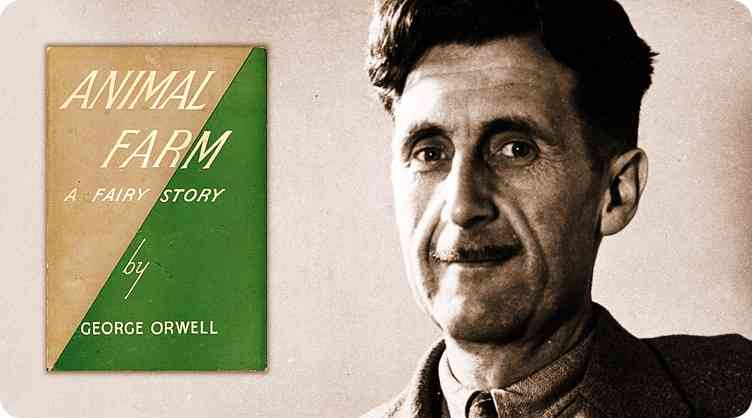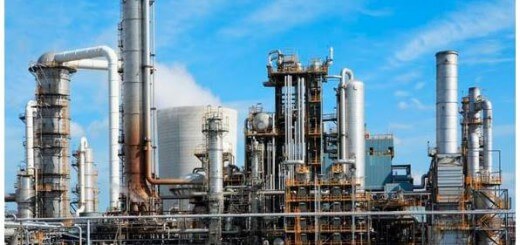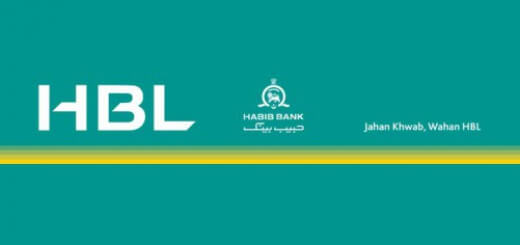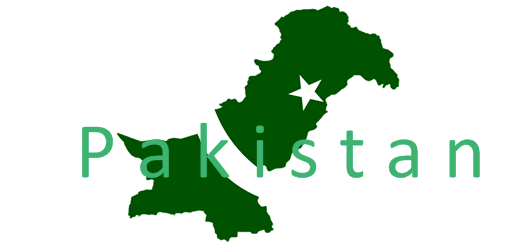Allegorical Review Of The Novel “Animal Farm” By George Orwell
Allegorical Review Of The Novel “Animal Farm” By George Orwell – Written by Hameed Khan
Chapter 1st Review
The Old Major’s dream gives the message and theme for the animals of farm was to give them the idea of animalism, and to make them get rid of human tyranny. His dream was to make an utopian society for animals, where they all will be equal. It was to make them free of human oppression. In his speech’s the Old Major described that all animals are miserable in the farm, whose existence are under the control of human, the Mr. Jones. He then, tried to awake animals from their sleeping or to make them aware of the slavery. The Old Major’s dream was to urge the animals and make them rise up against their master human and to overthrow him from the farm. The central meaning of the old Major’s dream was to bring revolution. His dream was reflection of revolutionary ideas, which he then conveyed it to other animals of the farm. He explained that only one way is there for all the animals to achieve freedom from the slavery of human tyranny and oppression, and It is that they have to show uprising violent against their enemy. His vision for animals was to make the world, where animals can work together for the common good. His ideology was based on the purpose that to make a society, which should not be based on any of the distinctions, like discrimination, or on any of the social status.
His main idea was also based to develop the atmosphere of collective will, and collective action. His vision was that he believed that all animals share a common interest and sense of loyalty to overthrow their enemy. And to establish a new society called animalism. This ideology was reinforced by the repeated refrains of the song “Beasts of England,” which old Major taught to the animals as a rallying cry for the revolution against human. His main theme of his dream was just for the quest of the freedom, equality, common interests, no distinctions based on social positions, collective society, no discrimination, sense of loyalty to one another, and justice for all animals. His belief was that these wills and ideals can only be achieved by collective action, and revolutionary struggles. To him, collective action was the most effective action in achieving the goals of freedom.
Chapter 2nd Review
In second chapter of this novel the author is going to present that the animals have successfully overthrown their enemy Mr. Jones and took the control over the farm. This is presenting and symbolising the “Russian Revolution” of the 1917, in which the Bolsheviks overthrew the Russian monarchy and then later on established the Soviet Unions. The pigs, who were the smartest of the animals on the farm and took the duties that were characterized and assigned to them in the same farm. They were considered to be the leaders of the farm and were also the leading figures of the farm after having their control on animal farm. This is the symbolic view of the communist party in Russia and were also to symbolise the emergence of the leadership like Lenin and Trotsky.
The concept of animalism in the animal farm was introduced by the pigs to other animals, and this concept was based on the set of principles that promote equality, common interests, and sense of loyalty to one another. They were also there to do their duties and make everything for the welfare of all animals in the farm. This is presenting a direct allegory of the communism, which aims to develop a classless society. A society which will be based on equality, equal distribution and equal treatment. However, when the time goes on, it becomes clear that animals in the farm are not equal. The pigs who were considered to be the leading figures were found that to be the ruling class, taking control over the resources in the farm house. They were their to use their intelligence, which was to justify their authority and power of ruling class over the animals farm. This allegorically presenting the Communist party leadership in Russia, who quickly consolidated the opportunity of power and established themselves to be the powerful ruling class in the Russia.
Review 3rd Chapter
This chapter is the allegory of depicting the events around the Russian revolution, which took place in 1917. In this chapter, the animals are seen working tirelessly to complete the harvesting of the crops in farm, leading by the pigs who were there to hold on the role of the leadership of the farm. The pigs, especially Napoleon and Snowball, are then shown to have the capability and have the qualities of leadership to organise the animals on the farm. Here in this chapter of the animal farm, the pigs leadership style symbolising the Bolsheviks party’s ideology and their ability to rally the workers and peasants in Russia. Their ability to plan and execute the harvested crops, using innovative techniques such as organising animal committees were to symbolise Bolsheviks’ efforts to modernise the agricultural system and the system of industry in Russia.
In this chapter, the growing division between Napoleon and Snowball is depicted. Snowball has been seen as an idealistic and visionary leader who wanted to make animal farm as an amazing place for all animals, while on the other hand Napoleon is portrayed as a ruthless and power hungry leader, who wanted to consolidate his position. He also wanted to maintain his power over the other animals on the farm. The tension between the two pigs is the allegory of the depiction of the division Napoleon and Snowball during the Russian revolution of 1917. Trotsky who believed in the creation of the socialist revolution, while Stalin was seen as to consolidate his position and to maintain his power of controlling the communist party in Russia. The chapter then ends with a dramatic scene, where Napoleon, with the help of his dogs, chases Snowball out of the farm. This scene from the chapter is the symbolic view, when Stalin used his secret police to demolish Trotsky in maintaining his own power over the Soviet unions.
Review 4th Chapter
In this chapter the author is going to explore the development of the animal revolution and also to see the gradual change in the rise of the pigs leadership positions. Pigs take more responsibility to run the animal farm, and they kept doing so with increasing confidence and competence. They were there to arrange committees, for decision making, and to take the responsibility of the administrative tasks, all that with the support of the other animals. One of the key events in this chapter was that the decision of making a windmill on the farm, which the pigs see it to increase the efficiency and productivity of their labour. The animals tried to build it, but eventually the storm came and destroyed it. This set them back their progress and leaves the animals demoralised on the farm.
This chapter can be seen as allegory of the interpretation of commentary on the early years of the Soviet Union under the leadership of the Joseph Stalin. The rise of the pigs power then portrayed that of the rise of the communist party in Russia, and their decision on making the windmill is the reflection of the Stalin push for rapid industrialisation in the Russia. The destruction of the windmill is then the reflection of the failure of five years plan, which purpose was to transform the Soviet economy but faced hurdles and obstacles. The demoralising of the animals after the destruction of the windmill echoes the disillusionment and despair that many Russians felt during the time.
Chapter 5th review
In this chapter there is an allegorical story of the Russian revolution and the early years of Soviet Russia. Chapter 5th is reflecting the story of the animals rebellion and also explores the leadership of the pigs. All those pigs, led by the Napoleon and Snowball, are represented as an intelligent and capable leaders, who were there to invest their potential and ability for the betterment of the equal distribution of resources among the animals. They were making decisions and committees to look over the farm from different aspects and to overlook the farm operation. These committees represent the various government structures of the Soviet Union. However, with the passage of time, the pigs become more and more corrupt, and their way of acting and behaviour becomes increasingly oppressive. The pigs who were taken by the Napoleon to be his guards, is then presenting the formation of the Soviet police who were secretly prepared. The pigs increasing power over the other animals is representing Stalinism and the establishment of the totalitarian power in the Soviet Union.
The other animals in the farm like boxer, the horse and sheep, who were working hard for the farm were loyal to the pigs, despite their growing oppression. They reflected the working classes and the masses, who were initially supportive to the Bolshevik revolution but ultimately, became exploited and oppressed by the Soviet government. The themes of power, struggle, corruption and struggles for equality are the central themes of the lesson, which are more relevant to the todays society. This novel also highlights the warning to that of the totalitarianism, the importance of the vigilant against the abuse of power. It suggests that the most equitable and just society would be corrupted and that the struggles for equality and freedom is an ongoing process.
Chapter 6th review
This chapter is going to explore the an ongoing conflicts between the pigs and the other animals in the farm. As the pigs having power in the farms become to be corrupted. The allegory of the battle between them represents the Bolsheviks revolution of the 1917, when the Russian people overthrew the ruling class and established a socialist government. This battle took place when the owner of the farm Mr. Jones and his men attempted to retake the farm from animals but he was repelled by the animals who have been trained by the Snowball in military tactics. The battle depicts the heroic struggle, with animals fighting bravely and ultimately triumphing over their oppressors.
However, the aftermath of the battle revealed the true nature of the pig’s leadership. Snowball, who was hailed as hero, who was given the honour and credit for his strategic planning against enemies, but Napoleon, who was hiding himself at the time of the battle, emerges himself to take the credit of the victory. He also executed several animals, who he claimed that the animals were collaborating with Mr. Jones. But, for this claim their was no true evidence with him to support his claim. This allegorically presenting the corrupt nature of the pig’s leadership, as they began to rewrite the history and to own the power for operating the animal farm. It also underscores the propaganda in maintaining power, as Napoleon was able to control the animals perception of the battle so that he can strengthen his status. It explore the theme of the power, corruption, and propaganda that are central to animal farm as a whole.
Chapter 7th review
In chapter 7th of the novel by George Orwell, the pigs who were increasingly becoming the corrupt and oppressive, enjoying the luxurious atmosphere of the animal farm, while the rest of the animals were kept aside. Other than pigs rest of the animals were not given the right to enjoy their life, but rather their rights were exploited by the pigs. The hens were forced to increase the production of the eggs and they were suffered greatly by the pigs to fulfil the demand. Boxer, who is a loyal and hardworking horse, introduced to be the symbol of the working class in the animal farm. However, despite his loyalty and hardworking for the better of the animal farm was betrayed by the pigs and sent him to the Knacker’s yard.
This chapter serves the lesson as warning to that of the authoritarian dangers. It is also a warning about the dangers of the misuse of the power. Let’s see ahead that what the novel represents the situation of the farm. I hope that the review as per my understanding would serve you better to know about the allegorical concepts relating to the Russian revolution and Soviet Union.
Chapter 8th review
In Chapter 8 of “Animal Farm,” the allegorical representation continues as the animals’ revolution takes a darker turn. The scarcity of resources and food shortage symbolize the failures of communism, and Napoleon’s increasing power mirrors totalitarianism. The manipulation of the commandments reflects the erosion of principles in a dictatorship. Additionally, the growing tensions between the pigs and other animals highlight the class struggle. Overall, this chapter serves as a critique of political corruption and the distortion of ideals.
Chapter 9th review
In the 9th chapter of “Animal Farm,” the allegory continues to unfold as the pigs’ behaviour mirrors the corrupting influence of power. They become indistinguishable from the humans they initially rebelled against, highlighting the cyclical nature of oppression and the erosion of ideals. The chapter symbolizes the betrayal of the original revolutionary spirit and serves as a cautionary tale about the dangers of unchecked authority.
Chapter 10th review
In the tenth chapter of “Animal Farm,” the allegory continues as the pigs’ corruption becomes more evident. The events reflect the power struggles and betrayals of the Russian Revolution and the Soviet Union. The expulsion of Boxer, the horse, mirrors the mistreatment of loyal workers by the ruling class. The pigs’ interactions with humans highlight the erosion of their original ideals, symbolizing real-world shifts in political alliances. Overall, this chapter sustains the allegorical nature of the novel by portraying historical and societal themes through the animals’ experiences.
Conclusion
In summation, George Orwell’s allegorical novella “Animal Farm” culminates with a cautionary depiction of the inexorable descent into despotism that emerges from the initial egalitarian aspirations of the animal denizens. The narrative unfolds as a microcosm of societal dynamics, wherein the porcine leadership, once advocates of equitable governance, metamorphose into autocratic oppressors. The avian motto, “All animals are equal, but some animals are more equal than others,” encapsulates the subversion of idealism into tyrannical rule, illuminating the insidious nature of power’s corruptive influence. Orwell adeptly employs anthropomorphism to allegorize the Russian Revolution and totalitarianism at large. Thus, the literary work serves as a poignant admonishment against ideological naiveté and the perilous implications of unchecked authority, evoking readers to remain vigilant against the erosion of liberty, the perversion of principles, and the perpetual struggle for unswerving justice.














